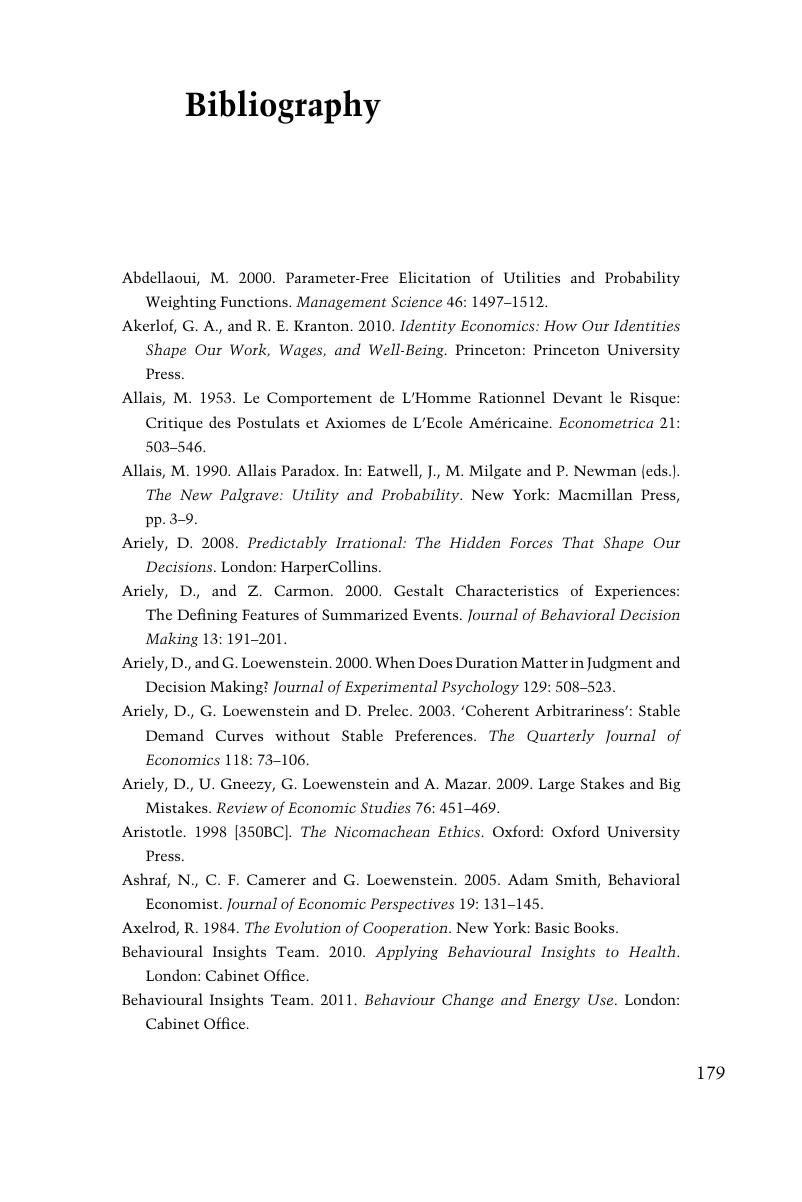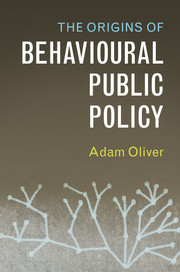Book contents
- The Origins of Behavioural Public Policy
- The Origins of Behavioural Public Policy
- Copyright page
- Dedication
- Contents
- Figures
- Tables
- Preface
- Acknowledgements
- 1 Assuming Rationality
- 2 Challenging Rationality
- 3 Describing Risky Behaviours
- 4 About Time
- 5 Experiencing and Remembering
- 6 Motivational Crowding
- 7 Nudges
- 8 Shoves and Budges
- 9 Give and Take
- 10 Summing Up
- Note on References
- Bibliography
- Index
- References
Bibliography
Published online by Cambridge University Press: 24 May 2017
- The Origins of Behavioural Public Policy
- The Origins of Behavioural Public Policy
- Copyright page
- Dedication
- Contents
- Figures
- Tables
- Preface
- Acknowledgements
- 1 Assuming Rationality
- 2 Challenging Rationality
- 3 Describing Risky Behaviours
- 4 About Time
- 5 Experiencing and Remembering
- 6 Motivational Crowding
- 7 Nudges
- 8 Shoves and Budges
- 9 Give and Take
- 10 Summing Up
- Note on References
- Bibliography
- Index
- References
Summary

- Type
- Chapter
- Information
- The Origins of Behavioural Public Policy , pp. 179 - 191Publisher: Cambridge University PressPrint publication year: 2017



